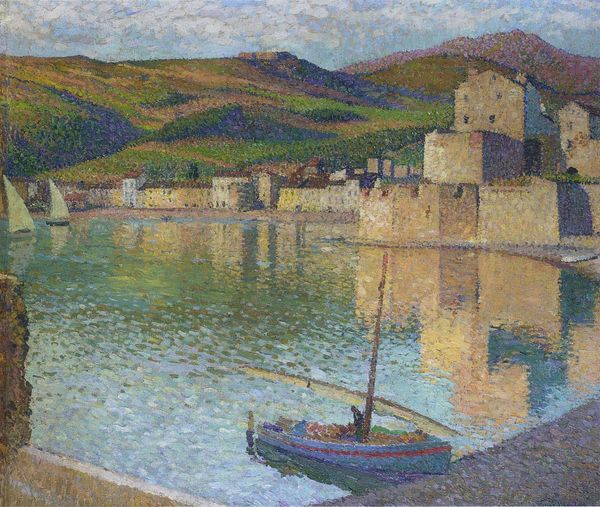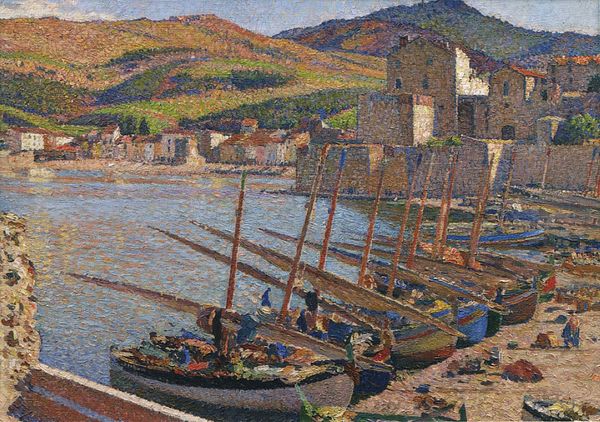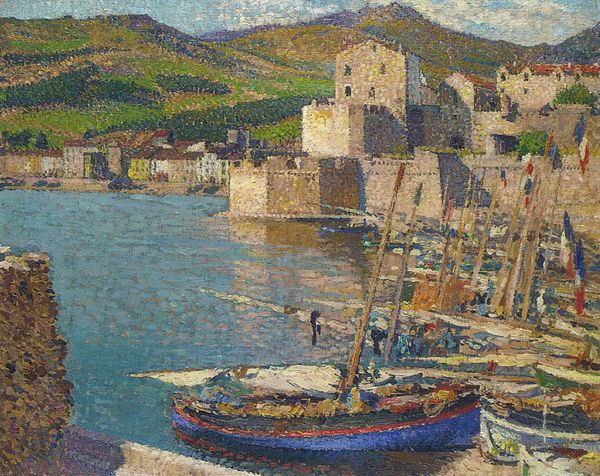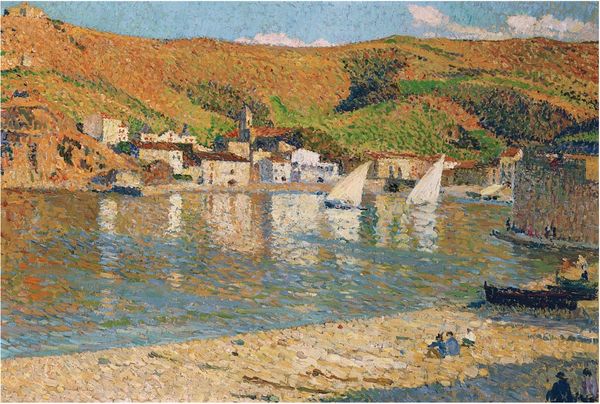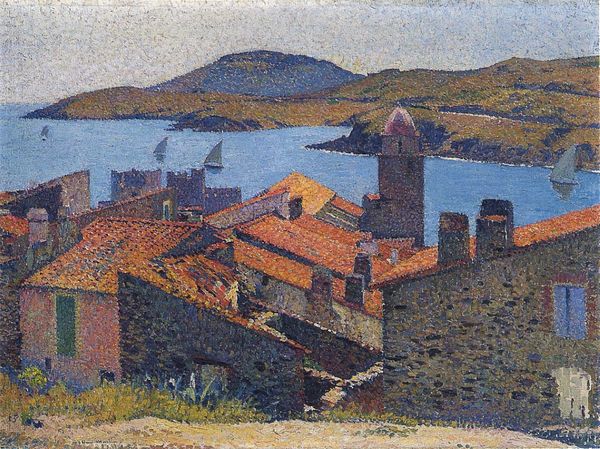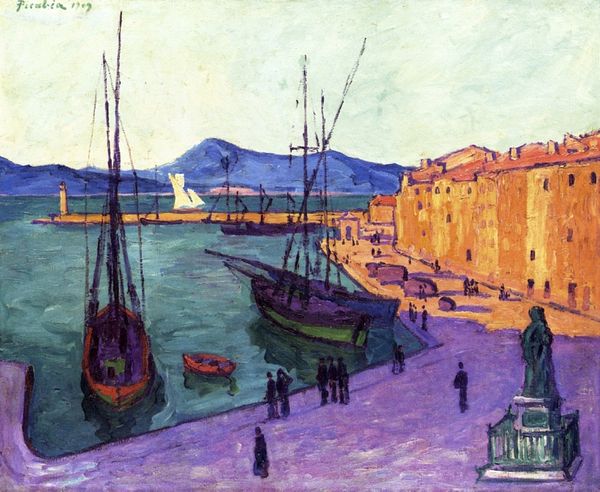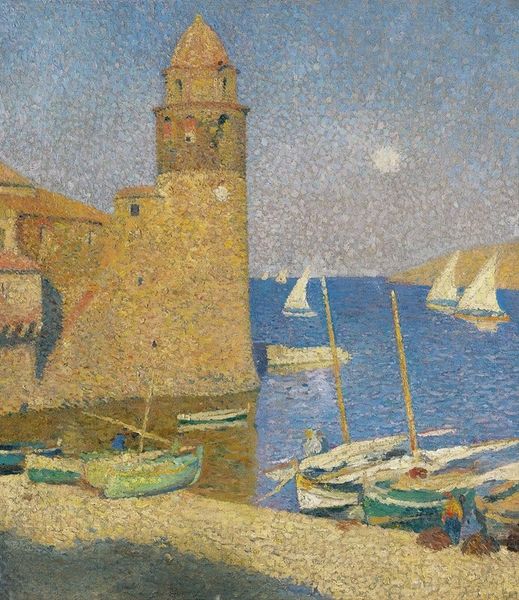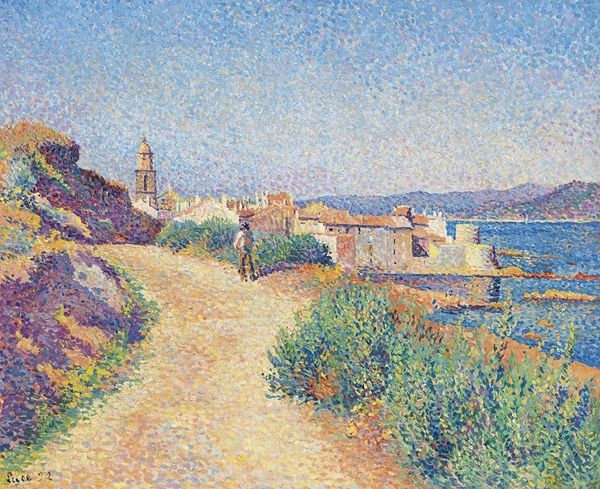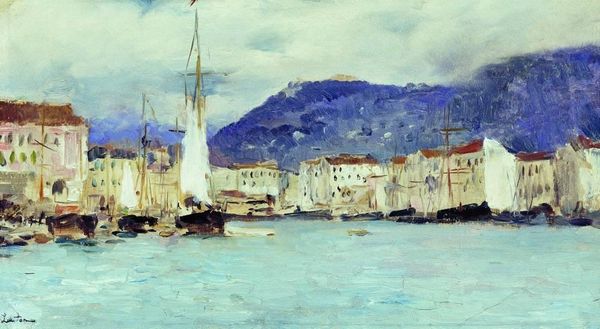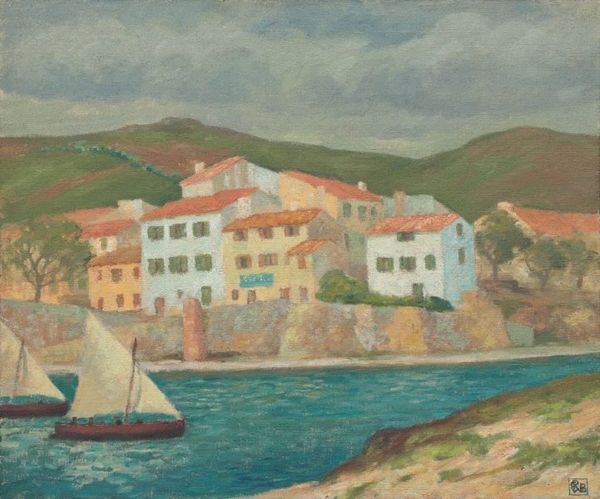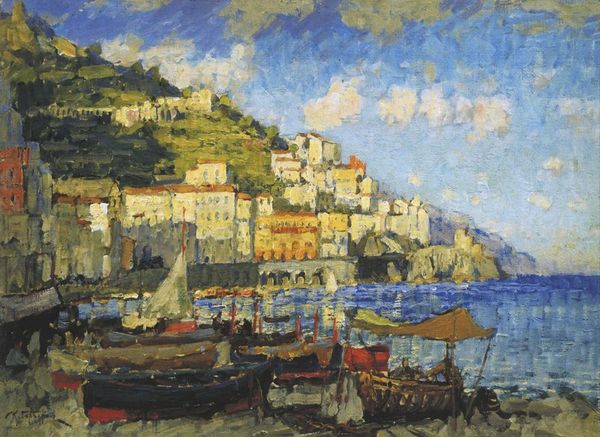
#
boat
#
tropical
#
abstract painting
#
ship
#
vehicle
#
house
#
impressionist landscape
#
possibly oil pastel
#
oil painting
#
ocean
#
acrylic on canvas
#
naturalistic tone
#
seascape
#
water
#
painting painterly
#
watercolor
#
sea
#
building
Copyright: Public domain
Editor: We're looking at "Sailboats in the Port of Collioure," painted by Henri Martin around 1920. It depicts a Mediterranean scene brimming with colorful buildings and bobbing boats. The almost mosaic-like application of paint creates a dazzling effect, but also a certain distance. What are your initial thoughts on this particular piece? Curator: It's tempting to view this idyllic port scene simply as a celebration of color and light, in line with post-Impressionist trends. However, examining the painting within its historical context provides a richer understanding. The 1920s were a period of recovery after the First World War. How do you think that era's socio-political climate impacted Martin's subject matter and style? Editor: That’s a good point. It’s easy to forget the shadow of the war. I suppose the joyful depiction of everyday life could be read as a conscious move away from the trauma, an intentional construction of beauty… a kind of… hopeful imagery? Curator: Precisely. Furthermore, Collioure itself held symbolic weight. As a picturesque location favored by artists like Matisse and Derain in the early 1900's, it had already become heavily aestheticized and therefore highly valued by cultural tourism. How does Martin contribute to and perhaps challenge, this pre-existing narrative? Editor: Hmm, by simplifying it? It feels more like a generalized, perhaps even generic, Mediterranean ideal than a portrait of Collioure itself. Is he perhaps selling us an idea *of* the place? Curator: That’s astute. The market for idealized landscapes thrived in the interwar years, appealing to a sense of national pride and a desire for escapism. Considering the prominence of tourism, how does that inform the artistic production? Editor: So, the painting acts not just as art but also as a commodity, catering to desires fueled by tourism and nationalism... Curator: Precisely. And understanding the historical context reveals a more nuanced interpretation beyond pure aesthetic appreciation. Editor: I never considered how historical pressures could influence even the brightest of landscapes. Thank you! Curator: It’s through this multi-layered examination that we can uncover a fuller story embedded in visual expression.
Comments
No comments
Be the first to comment and join the conversation on the ultimate creative platform.

